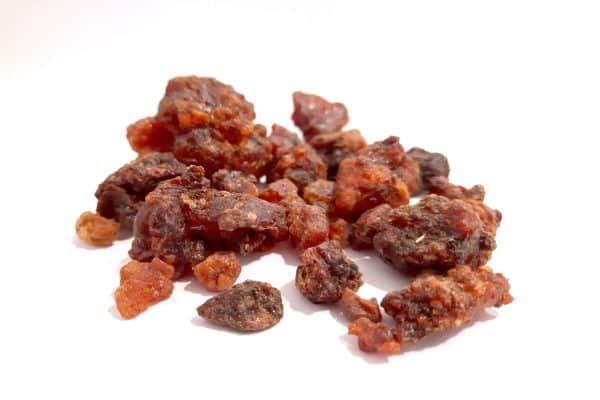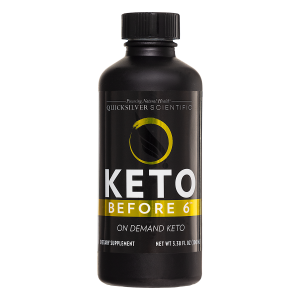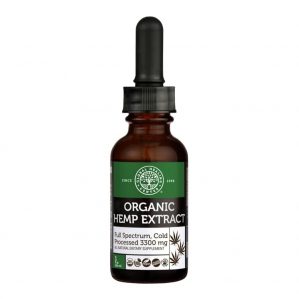What You Need To Know About Lime: An Overview of Research, Benefits, Safety, and 7 Incredible Therapeutic Uses
Lime: An Overview of Research, Benefits, Safety, and Therapeutic Uses
Overview

Brief History of Lime
Lime, specifically Citrus aurantiifolia, has a rich history that spans centuries and continents. Its journey from ancient times to modern kitchens and pharmacies is a testament to its enduring appeal and versatility.
Ancient Origins
The lime is believed to have originated in Southeast Asia, particularly the region encompassing India, Malaysia, and Indonesia. Archaeological evidence suggests that limes were cultivated in this area as far back as 4,000 years ago. The fruit was prized for its culinary and medicinal properties, used in traditional remedies and to enhance the flavor of foods.
Spread to the Middle East and Mediterranean
Lime cultivation spread westward through trade routes. By around 1,000 CE, this citrus had reached the Middle East and the Mediterranean, thanks to Arab traders. The fruit became integrated into Middle Eastern cuisine and medicine, valued for its refreshing taste and health benefits.
Introduction to Europe
During the Crusades in the 11th and 12th centuries, returning Crusaders brought limes back to Europe. However, it wasn’t until the expansion of European trade routes and colonization in the 16th and 17th centuries that this citrus became more widely known in Europe. Spanish and Portuguese explorers played a crucial role in introducing limes to the New World.
Lime in the Americas
Lime cultivation spread to the Americas through European colonization. Spanish explorers brought lime trees to the Caribbean, Mexico, and Florida. The British navy also played a significant role in the history of this citrus. In the 18th century, the British navy adopted lime juice as a preventive measure against scurvy, a disease caused by vitamin C deficiency, leading to the nickname “limey” for British sailors.
Modern Era
Today, lime is grown in tropical and subtropical regions around the world. Major lime-producing countries include India, Mexico, Brazil, and the United States. The fruit is integral to various cuisines, beverages, and health products, continuing its legacy as a vital ingredient in both food and medicine.
Key Researches
Nutritional and Phytochemical Composition
Lime is packed with essential nutrients including vitamins (C, B6), minerals (calcium, potassium), and dietary fiber. Its phytochemical composition includes flavonoids like hesperidin and naringin, essential oils such as limonene and citral, and other bioactive compounds. Research highlights the antioxidant, anti-inflammatory, and antimicrobial properties of these compounds.
Antioxidant and Antimicrobial Properties
A study published in the Journal of Agricultural and Food Chemistry investigated the antioxidant capacity of lime essential oils, revealing significant free radical scavenging activity, which is crucial for reducing oxidative stress and preventing chronic diseases. Another study in the Journal of Applied Microbiology demonstrated the antimicrobial effects of lime juice and oil against various bacterial strains, including E. coli and Salmonella.
Health Benefits
Immune System Support
The high vitamin C content in this citrus is well-documented for boosting the immune system. A review in Nutrients highlighted that vitamin C enhances the production of white blood cells, which are vital for combating infections.
Skin Health
Lime’s antioxidant properties, particularly due to its vitamin C and flavonoids, make it beneficial for skin health. A study in Dermatologic Therapy suggested that topical application of lime extract can reduce wrinkles, improve skin elasticity, and protect against UV damage.
Digestive Health
Lime juice is traditionally used to improve digestion. Research published in Phytotherapy Research indicated that the acidic nature of lime stimulates digestive enzymes, thereby aiding digestion and relieving constipation.
Safety and Therapeutic Compounds
Safety
Lime is generally safe for consumption and topical use. However, excessive intake can lead to dental enamel erosion due to its high acidity. People with citrus allergies should avoid this citrus. Topical application of lime oil can cause photosensitivity, leading to skin irritation or burns upon exposure to sunlight.
Therapeutic Compounds and Their Effects
The therapeutic properties of many essential oils and natural extracts are attributed to specific bioactive compounds. Among these, alpha-pinene, beta-cedrene, d-limonene, and gamma-terpinene are notable for their diverse health benefits. Below is an overview of these compounds and their therapeutic uses, supported by scientific research. Flavonoids, citrals, and vitamin C are bioactive compounds found in citrus fruits like lime, offering numerous health benefits. These compounds have been extensively studied for their therapeutic properties, which range from antioxidant and anti-inflammatory effects to immune system support and skin health.
Alpha-Pinene
Chemical Profile: Alpha-pinene is a bicyclic monoterpene found in the essential oils of many plants, particularly conifers like pine trees, as well as in rosemary and eucalyptus.
Therapeutic Uses:
- Anti-inflammatory: Alpha-pinene has been shown to reduce inflammation. A study published in Phytomedicine demonstrated its effectiveness in inhibiting the production of pro-inflammatory cytokines, making it useful in treating inflammatory conditions.
- Bronchodilator: It has bronchodilatory properties, which can help in respiratory conditions such as asthma. Research in the Journal of Natural Medicines highlighted its ability to relax bronchial muscles.
- Antimicrobial: Alpha-pinene exhibits antimicrobial activity against a range of pathogens, including bacteria and fungi. A study in the Journal of Applied Microbiology found it effective against Staphylococcus aureus and Escherichia coli.
Beta-Cedrene
Chemical Profile: Beta-cedrene is a sesquiterpene commonly found in the essential oil of cedarwood. It is known for its woody aroma and various therapeutic properties.
Therapeutic Uses:
- Sedative and Relaxant: Beta-cedrene has sedative effects, making it beneficial for reducing anxiety and promoting relaxation. Research in BMC Complementary and Alternative Medicine indicated its potential in managing stress and anxiety disorders.
- Anti-inflammatory: Similar to alpha-pinene, beta-cedrene also possesses anti-inflammatory properties. Studies have shown it can help reduce inflammation and may be useful in treating conditions like arthritis.
- Antimicrobial: Beta-cedrene has demonstrated antimicrobial activity, particularly against fungal infections. A study in Mycoses highlighted its effectiveness in inhibiting the growth of various fungal strains.
D-Limonene
Chemical Profile: D-limonene is a monoterpene found in the rinds of citrus fruits such as oranges, lemons, and limes. It is widely recognized for its pleasant citrus aroma and multiple health benefits.
Therapeutic Uses:
- Antioxidant: D-limonene exhibits strong antioxidant properties, helping to neutralize free radicals and reduce oxidative stress. A review in Food and Chemical Toxicology emphasized its potential in protecting against oxidative damage.
- Digestive Health: It supports digestive health by promoting the secretion of digestive juices and easing symptoms of acid reflux. Research in Alternative Medicine Review found that d-limonene can help relieve heartburn and gastroesophageal reflux disease (GERD).
- Anticancer: D-limonene has shown promise in cancer prevention and therapy. Studies published in Cancer Prevention Research indicated its ability to induce apoptosis (programmed cell death) in cancer cells and inhibit tumor growth.
Gamma-Terpinene
Chemical Profile: Gamma-terpinene is a monoterpene found in many essential oils, including tea tree, cumin, and coriander oils. It is known for its spicy, citrusy aroma.
Therapeutic Uses:
- Antioxidant: Gamma-terpinene has potent antioxidant properties. A study in the Journal of Agricultural and Food Chemistry demonstrated its ability to scavenge free radicals and protect cells from oxidative stress.
- Anti-inflammatory: It also exhibits anti-inflammatory effects, which can help reduce inflammation and pain. Research in Phytotherapy Research highlighted its potential in managing inflammatory diseases.
- Antimicrobial: Gamma-terpinene is effective against a variety of microbial pathogens, including bacteria and fungi. A study in Letters in Applied Microbiology found it to be an effective antimicrobial agent, particularly in combination with other terpenes.
Flavonoids
Chemical Profile: Flavonoids are a diverse group of polyphenolic compounds found in plants, including citrus fruits. Hesperidin and naringin are two flavonoids commonly found in citrus fruits like lime.
Therapeutic Uses:
- Antioxidant: Flavonoids exhibit strong antioxidant activity, helping to neutralize free radicals and reduce oxidative stress. A study in Food Chemistry highlighted the antioxidant capacity of citrus flavonoids, including hesperidin and naringin.
- Anti-inflammatory: Flavonoids have anti-inflammatory effects, which can help reduce inflammation and prevent chronic diseases. Research in Biochemical Pharmacology demonstrated the anti-inflammatory activity of hesperidin in reducing inflammation in animal models.
- Cardiovascular Health: Flavonoids may improve cardiovascular health by reducing the risk of heart disease. A meta-analysis published in Nutrition, Metabolism & Cardiovascular Diseases suggested that flavonoid-rich foods are associated with a lower risk of cardiovascular events.
Citrals
Chemical Profile: Citrals are a group of compounds that include citral (a mixture of two geometric isomers, geranial and neral) found in citrus fruits like lime. They contribute to the characteristic citrus aroma.
Therapeutic Uses:
- Antimicrobial: Citrals possess antimicrobial properties, making them effective against a variety of pathogens. A study in Journal of Applied Microbiology demonstrated the antimicrobial activity of citral against bacteria and fungi.
- Digestive Aid: Citrals can stimulate the production of digestive enzymes, aiding in digestion. Research in Journal of Natural Products indicated that citral stimulates digestive secretions and can help alleviate digestive issues.
- Mood Enhancement: The aroma of citrals has mood-enhancing effects. A study in Chemical Senses found that exposure to citrus fragrance, including citral, can improve mood and reduce stress levels.
Vitamin C
Chemical Profile: Vitamin C, also known as ascorbic acid, is a water-soluble vitamin found in citrus fruits like lime. It is an essential nutrient with powerful antioxidant properties.
Therapeutic Uses:
- Immune System Support: Vitamin C plays a crucial role in immune function, supporting the production and function of white blood cells. A review in Nutrients highlighted the importance of vitamin C in enhancing immune response.
- Skin Health: Vitamin C is essential for collagen synthesis, which is important for skin health and wound healing. Research in Dermatologic Surgery suggested that topical vitamin C can improve the appearance of aging skin.
- Antioxidant: Vitamin C is a potent antioxidant, protecting cells from oxidative damage. A study in Free Radical Biology & Medicine demonstrated its ability to reduce oxidative stress in the body.
These compounds highlight the significant therapeutic potential of natural plant-derived substances, offering various health benefits from anti-inflammatory and antimicrobial effects to antioxidant and anticancer properties. Flavonoids, citrals, and vitamin C in this citrus offer a wide range of therapeutic benefits, from antioxidant and anti-inflammatory effects to immune system support and skin health. Incorporating this citrus
into your diet and skincare routine can be a natural way to boost your health and well-being.
What Are The Therapeutic Uses of Lime?
Lime (Citrus aurantiifolia) is renowned not only for its culinary uses but also for its various therapeutic applications. Its rich content of vitamins, minerals, and bioactive compounds makes it a versatile remedy for numerous health issues. Below are the key therapeutic uses of this citrus supported by scientific research.
Easing Sore Throats
Lime juice is a traditional remedy for sore throats due to its high vitamin C content and antibacterial properties. Vitamin C boosts the immune system, while the acidic nature of this citrus helps reduce throat inflammation and clear mucus. A study in the Journal of Medicinal Food highlighted the antibacterial activity of lime, which can help fight throat infections caused by bacteria.
Cleansing Water
Lime has been used as a natural water purifier. The citric acid in lime can help inactivate certain bacteria and viruses in water, making it safer to drink. Research published in Water Research demonstrated that lime juice, when added to contaminated water, significantly reduced the presence of harmful pathogens such as Escherichia coli.
Encouraging Lymphatic Drainage
The lymphatic system is crucial for removing toxins and waste from the body. This citrus’ high antioxidant content supports the lymphatic system by reducing oxidative stress and promoting detoxification. Consuming lime water can help stimulate the lymphatic system and encourage drainage, which is essential for maintaining overall health.
Aiding Gallbladder Function and Fat Digestion
Lime juice can stimulate the production of bile, a digestive fluid produced by the liver and stored in the gallbladder. Bile is essential for the digestion and absorption of fats. Drinking lime water before meals can enhance fat digestion and prevent issues such as gallstones. According to a study in the World Journal of Gastroenterology, the citric acid in this citrus improves bile flow and reduces cholesterol levels, thereby supporting gallbladder health.
Lifting Mood and Promoting Balance
Lime’s invigorating scent is known for its mood-lifting properties. The essential oils found in lime, particularly limonene, have been shown to have antidepressant effects. A study in Phytotherapy Research found that inhaling lime essential oil reduced stress and anxiety levels, promoting emotional balance and well-being.
Fighting Acne and Skin Conditions
Lime’s antibacterial and astringent properties make it an effective remedy for acne and other skin conditions. The vitamin C and flavonoids in lime help reduce inflammation, promote healing, and prevent scarring. Applying diluted lime juice to the skin can help clear up acne and brighten the complexion. Research in the Journal of Cosmetic Dermatology supports the use of this citrus for improving skin health and treating acne.
Repelling Insects
Lime essential oil is a natural insect repellent. The strong scent of limonene and citral in lime deters insects such as mosquitoes and flies. A study published in the Journal of Vector Ecology found that lime essential oil was effective in repelling various insect species, making it a safer alternative to chemical repellents.
After Thoughts
Lime is a versatile fruit with a rich nutritional profile and a variety of health benefits. Its therapeutic compounds, including vitamin C, flavonoids, limonene, and citral, contribute to its antioxidant, anti-inflammatory, antimicrobial, and immune-boosting properties. While generally safe, it is important to use lime in moderation and with caution, especially when applied topically. Ongoing research continues to uncover the full potential of lime in promoting health and preventing disease.
Start incorporating lime into your diet today to help start enjoying its health benefits and experience a revitalized optimal health.
For natural and healing remedies, products, and supplements to help you live your most optimal healthy life, visit our store here!
Remember: Own Your Health!
If you enjoyed the information presented in this article, Please Share It. Help us reach more people and keep this website going! Thank you!
Note: The information provided in this article is for educational purposes only and should not be considered medical advice. Please consult with a healthcare professional or registered dietitian before making any significant changes to your diet or lifestyle.
Frequently Asked Questions
Here are some frequently asked questions about cloves:
What are the health benefits of lime?
Lime offers several health benefits due to its rich nutrient profile, including vitamin C, flavonoids, and essential oils. These benefits include immune system support, improved digestion, skin health, and antioxidant properties.
How can lime be used to improve skin health?
The vitamin C and flavonoids in lime contribute to its skin health benefits. Lime can be applied topically to reduce wrinkles, improve skin elasticity, and protect against UV damage. It can also help treat acne and promote a brighter complexion.
Can lime help with digestion?
Yes, lime is known to aid digestion. The acidic nature of lime juice can stimulate the production of digestive enzymes, helping to break down food and relieve symptoms of indigestion. Lime juice is also a natural remedy for constipation.
Is lime beneficial for the immune system?
Yes, lime is rich in vitamin C, which is known to boost the immune system. Vitamin C enhances the production of white blood cells, which are essential for fighting infections. Regular consumption of lime can help reduce the duration and severity of colds and other infections.
How can lime be used to repel insects?
Lime essential oil is a natural insect repellent. The strong scent of limonene and citral in lime deters insects such as mosquitoes and flies. Diluted lime oil can be applied to the skin or used in diffusers to repel insects.
Are there any precautions to consider when using lime?
While lime is generally safe for consumption and topical use, excessive intake can lead to dental enamel erosion due to its high acidity. People with citrus allergies should avoid lime. Topical application of lime oil can cause photosensitivity, so it’s important to avoid sun exposure after application.
References
- Journal of Agricultural and Food Chemistry, “Antioxidant Capacity of Lime Essential Oils.”
- Journal of Applied Microbiology, “Antimicrobial Effects of Lime Juice and Oil.”
- Nutrients, “Vitamin C and Immune Function.”
- Dermatologic Therapy, “Topical Application of Lime Extract and Skin Health.”
- Phytotherapy Research, “Lime Juice and Digestive Health.”
- Morton, J. F. (1987). “Lime: Citrus aurantiifolia”. In: Fruits of Warm Climates. Julia F. Morton, Miami, FL.
- Grieve, M. (1931). “A Modern Herbal”. Penguin, New York.
- Meagher, M. (2003). “A Brief History of the Lime”. In: A History of the World in 6 Glasses, Bloomsbury Publishing.
- Janick, J. (2005). “The Origins of Fruit, Fruit Growing, and Fruit Breeding”. Plant Breeding Reviews. Vol. 25, Wiley-Blackwell.
- Journal of Medicinal Food, “Antibacterial Activity of Lime Juice.”
- Water Research, “Lime Juice as a Natural Water Purifier.”
- Mayo Clinic, “Lymphatic System Health and Detoxification.”
- World Journal of Gastroenterology, “Effects of Citric Acid on Bile Flow and Cholesterol Levels.”
- Phytotherapy Research, “Antidepressant Effects of Lime Essential Oil.”
- Journal of Cosmetic Dermatology, “Lime for Acne Treatment and Skin Health.”
- Journal of Vector Ecology, “Lime Essential Oil as an Insect Repellent.”
- Food Chemistry, “Antioxidant capacity of citrus flavonoids.”
- Biochemical Pharmacology, “Anti-inflammatory effects of hesperidin.”
- Nutrition, Metabolism & Cardiovascular Diseases, “Flavonoid-rich foods and cardiovascular risk.”
- Journal of Applied Microbiology, “Antimicrobial activity of citral.”
- Journal of Natural Products, “Digestive effects of citral.”
- Chemical Senses, “Mood-enhancing effects of citrus fragrance.”
- Nutrients, “Vitamin C and immune function.”
- Dermatologic Surgery, “Vitamin C and skin health.”
- Free Radical Biology & Medicine, “Antioxidant effects of vitamin C.”
- Phytomedicine, “Anti-inflammatory effects of alpha-pinene.”
- Journal of Natural Medicines, “Bronchodilatory effects of alpha-pinene.”
- Journal of Applied Microbiology, “Antimicrobial activity of alpha-pinene.”
- BMC Complementary and Alternative Medicine, “Sedative and relaxant effects of beta-cedrene.”
- Mycoses, “Antimicrobial activity of beta-cedrene.”
- Food and Chemical Toxicology, “Antioxidant properties of d-limonene.”
- Alternative Medicine Review, “Digestive health benefits of d-limonene.”
- Cancer Prevention Research, “Anticancer properties of d-limonene.”
- Journal of Agricultural and Food Chemistry, “Antioxidant activity of gamma-terpinene.”
- Phytotherapy Research, “Anti-inflammatory effects of gamma-terpinene.”
- Letters in Applied Microbiology, “Antimicrobial activity of gamma-terpinene.”
- Journal of Agricultural and Food Chemistry: Antioxidant capacity of lime essential oils.
- Journal of Applied Microbiology: Antimicrobial effects of lime juice and oil.
- Nutrients: Vitamin C and immune function.
- Dermatologic Therapy: Topical application of lime extract and skin health.
- Phytotherapy Research: Lime juice and digestive health.
- Journal of Vector Ecology: Lime essential oil as an insect repellent.




























0 Comment